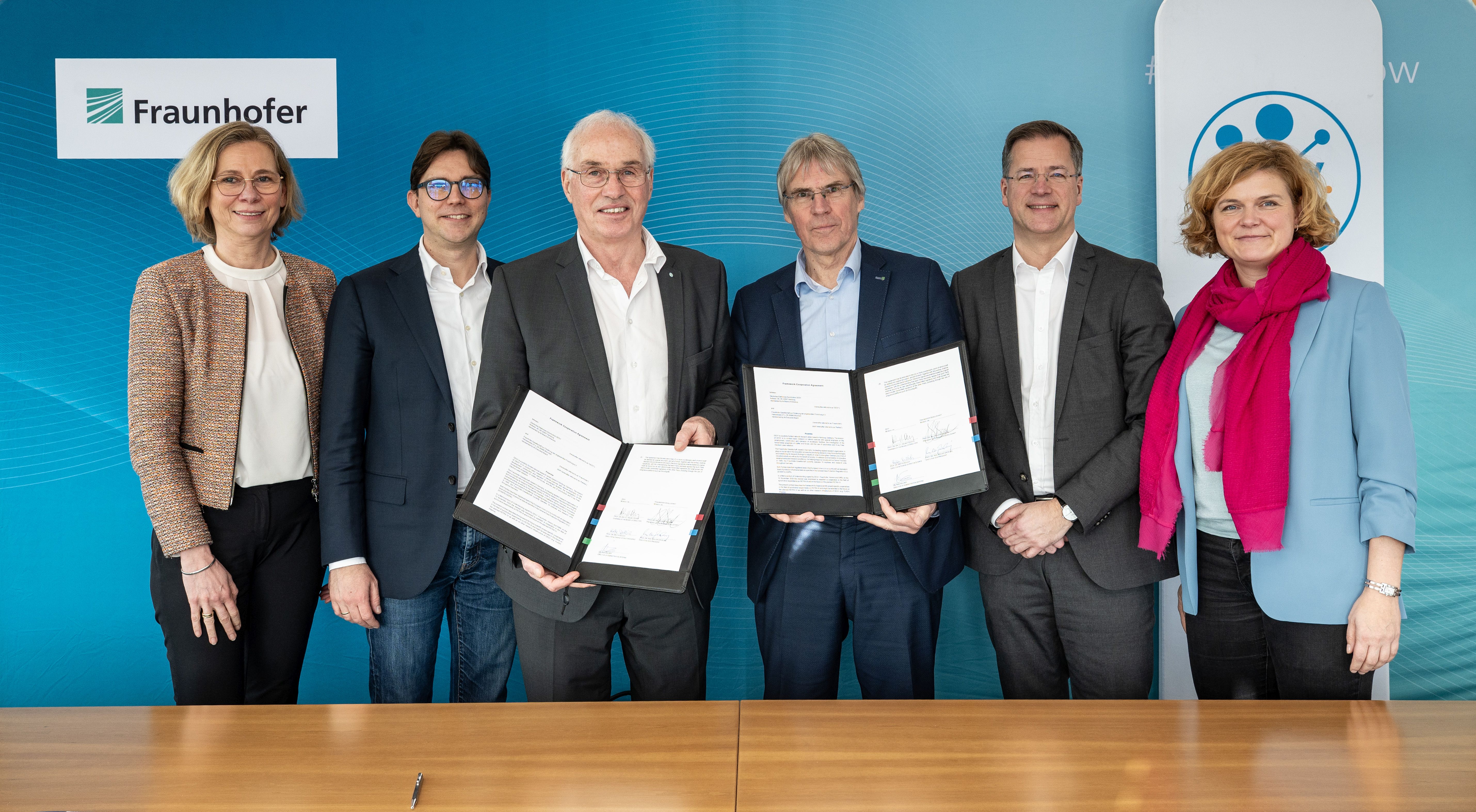Fraunhofer and DESY launch strategic cooperation to promote innovation and research
DESY and Fraunhofer have signed a cooperation agreement to address economic and social challenges and ensure technological sovereignty in Germany and Europe. Expertise, infrastructures and knowledge will be pooled and implemented in a targeted manner to create innovations.
Germany has an excellent science and innovation system with a clear division of labour in which each institution makes its own important contribution to the innovation chain. Fraunhofer stands for applied research and technology transfer, while DESY develops and operates leading infrastructures that act as catalysts for technological developments and innovation processes. In order to address economic and social challenges and secure technological sovereignty in Germany and Europe, it is crucial to pool expertise, infrastructures and knowledge across the boundaries of individual research institutions and translate them into innovations in a targeted manner.
‘The agreement on cooperation between DESY and Fraunhofer is an important step towards more innovation, more transfer and more competitiveness for Germany as a centre of research. In times of economic and social challenges, it is essential to pool mission-specific expertise, infrastructure and knowledge across the boundaries of the individual research institutions and to translate them into innovations in a planned and targeted manner. By working closely together, we will transfer cutting-edge research and the latest findings into applications even faster and make them useful for our economy,’ explains Holger Hanselka, President of the Fraunhofer-Gesellschaft.
Helmut Dosch, Chairman of the DESY Board of Directors, emphasises the importance of research infrastructures: ‘By working more closely with the various Fraunhofer Institutes, we can open up the use of DESY analytics even better for applied research and further industrial use. We look forward to working with the Fraunhofer-Gesellschaft to further accelerate innovation and the transfer of cutting-edge technologies for a sustainable and competitive society.’
Fraunhofer institutes utilise DESY's cutting-edge infrastructure
As a leading particle accelerator centre, DESY offers a platform for international cutting-edge research with facilities such as the X-ray radiation source PETRA III. PETRA III is a state-of-the-art 3rd generation X-ray light source that enables excellent research results. With the planned 4D X-ray microscope PETRA IV, an even more powerful radiation source is being planned, which will be the most powerful in the world from 2032. With PETRA IV, it will be possible to analyse complex materials and processes on the nanometre scale under environmental, industrial and medical conditions with the highest precision and thus strengthen the basis for knowledge-based material and drug design.
The co-operation with Fraunhofer enables DESY to further develop its infrastructure as a hub for international talent in the field of industrial research and development. Fraunhofer researchers, in turn, will benefit from prioritised scientific access to X-ray-based analytics. A customised access model is planned that will facilitate the use of the research infrastructure and the associated X-ray-based analytical methods. This would enable researchers to answer current industry-relevant questions with maximum informative value.
‘Together with Fraunhofer, we can now offer analytical options along the entire industrial value chain. This is unique in this form and directly benefits researching companies. This is highly relevant for industry, especially when it comes to significantly improving the material structure of products,’ adds Dr Arik Willner, Chief Technology Officer at DESY.
Framework agreement for scientific collaboration
On 13 November 2023, the Fraunhofer-Gesellschaft and DESY, together with the Helmholtz Centre Hereon and the European Molecular Biology Laboratory EMBL, signed a Memorandum of Understanding. In it, they expressed their interest in establishing a co-operation for synchrotron experiments at PETRA III and, in future, at PETRA IV. Since then, initial pilot projects have demonstrated the potential of close collaboration. In the pilot phase, a total of 23 projects with a total of over 1500 hours of beam time were launched at PETRA III by the end of 2024.
Examples of the collaboration that has already begun include technology developments - for example, researchers from the Fraunhofer Institute for Silicon Technology ISIT have developed a mirror system to comprehensively scan samples for X-ray investigations at PETRA III, as in the laser sector. Another successful example is an interdisciplinary collaboration with DESY, the Fraunhofer Institute for Microstructure of Materials and Systems IMWS, the Max Planck Institute for Human Cognitive and Brain Sciences and the University of Leipzig. Brain samples were analysed on a beamline at PETRA III. The aim of the joint project is to use the data obtained to characterise the structure of the brain fibres and link them to brain functions. These findings will be used to further develop MRI techniques.
published
- 2025/02/25
Press Contact
- innovation@desy.de


